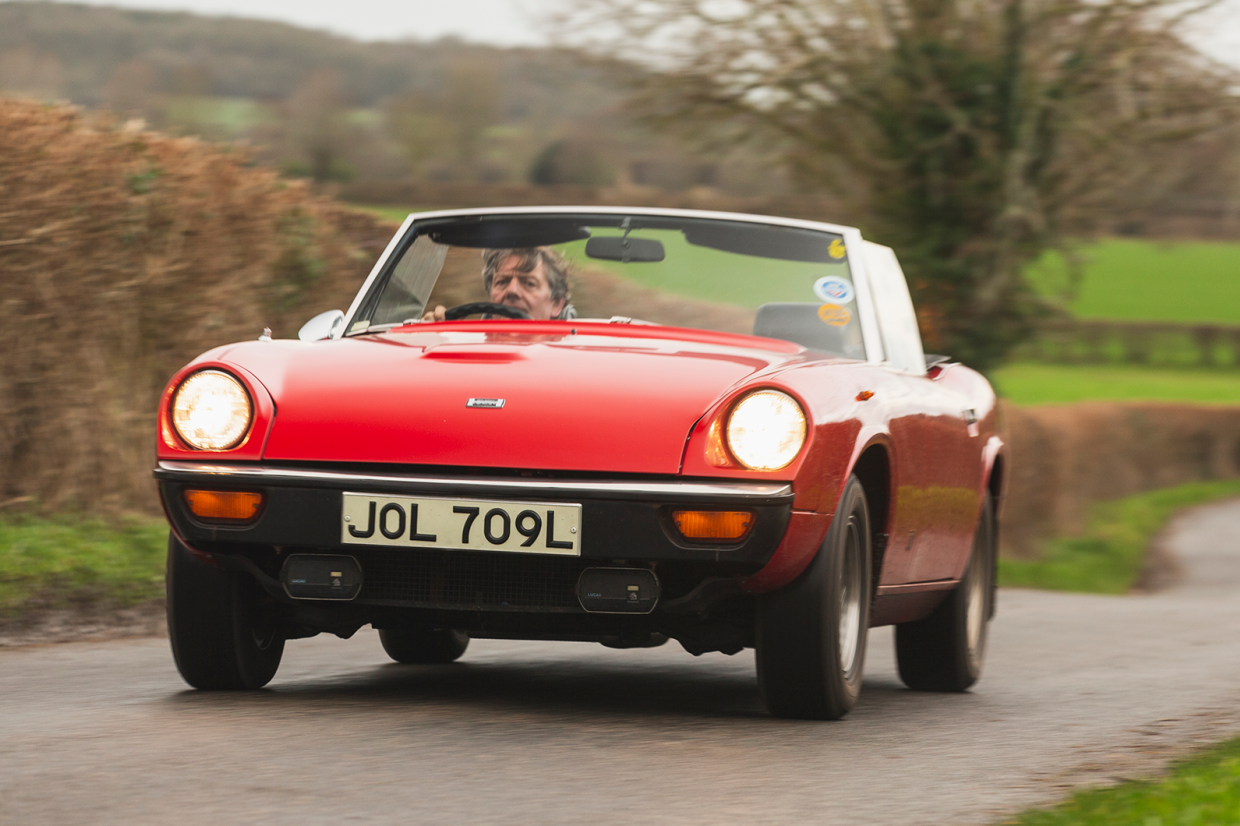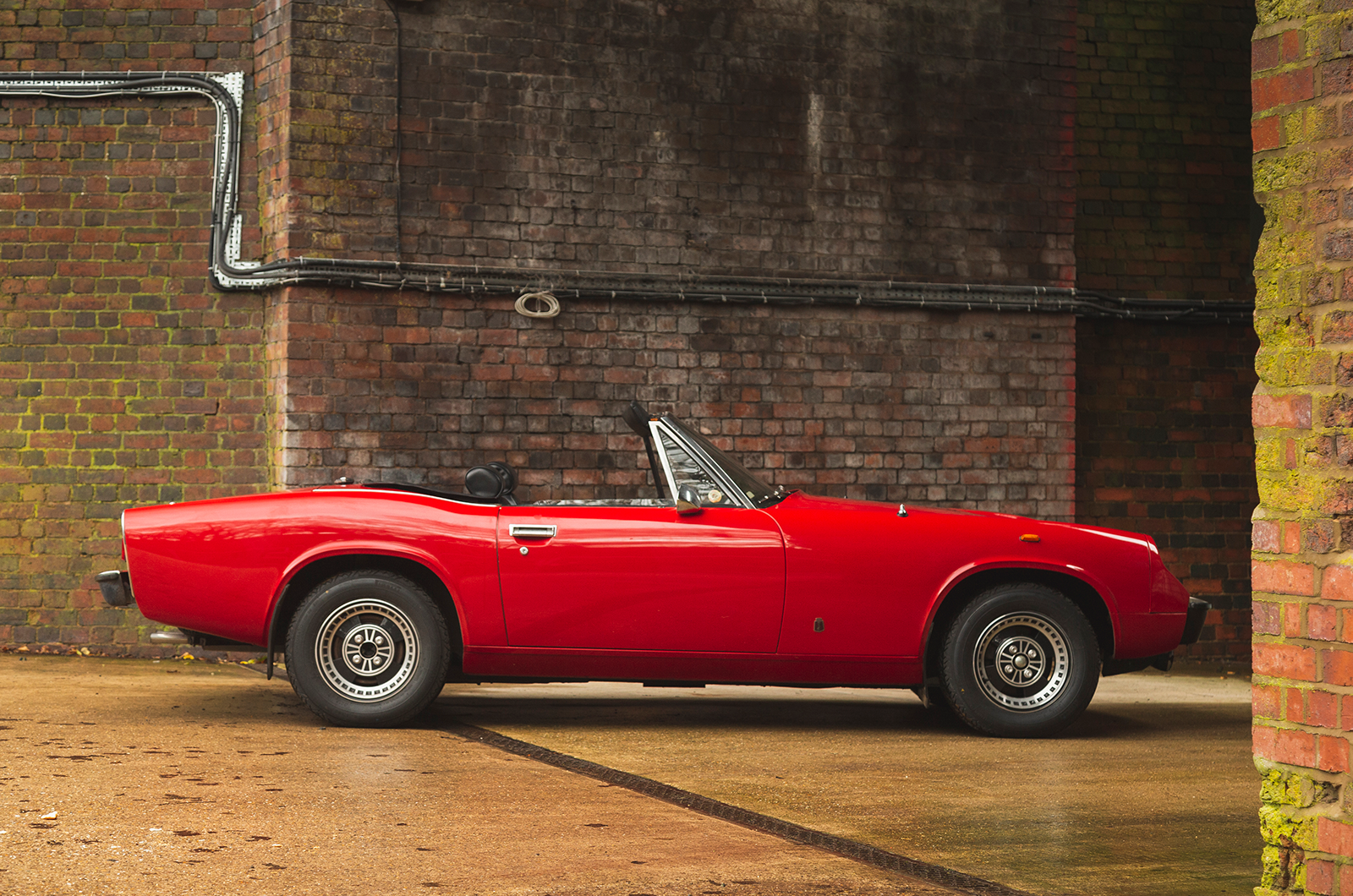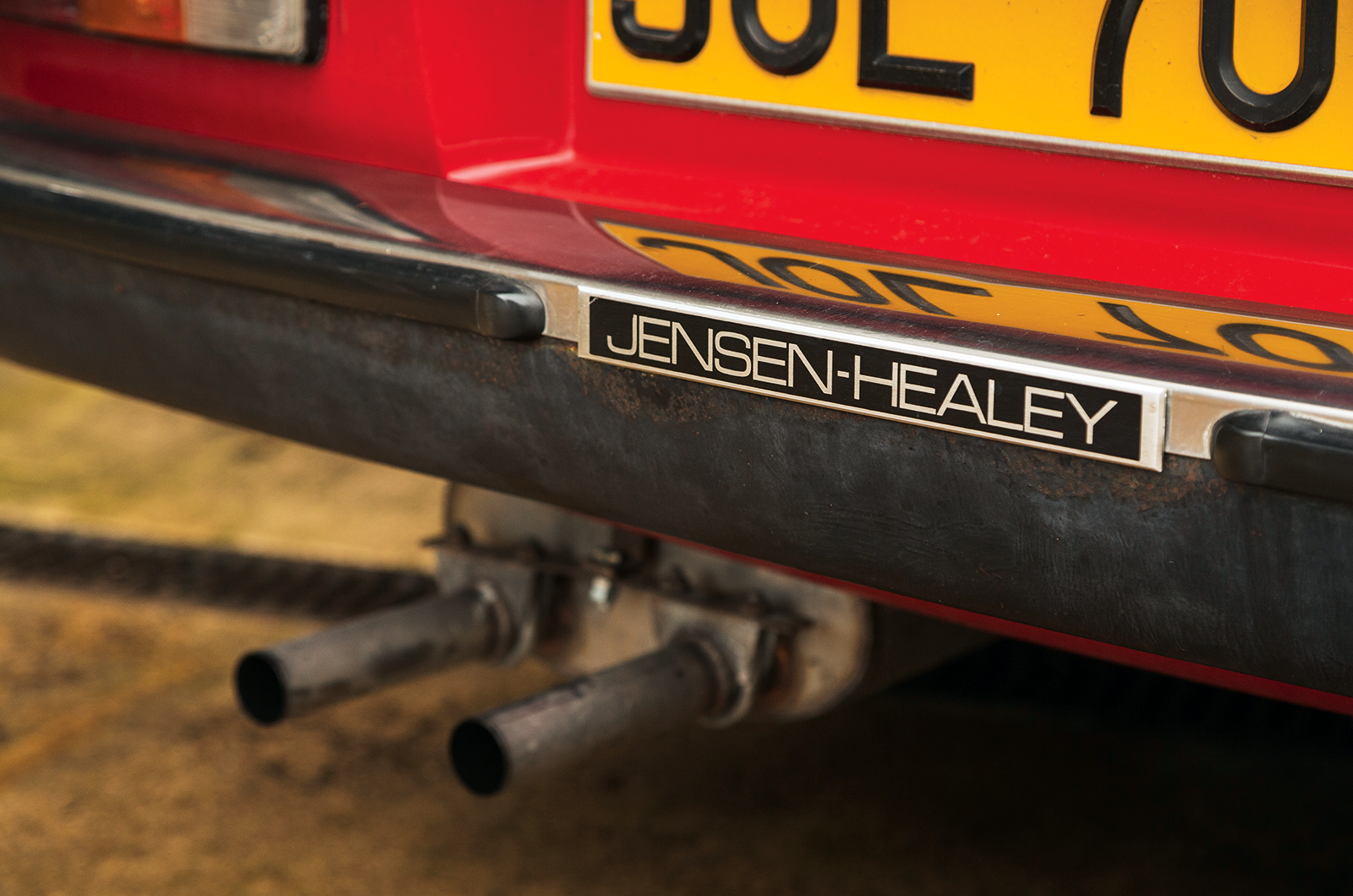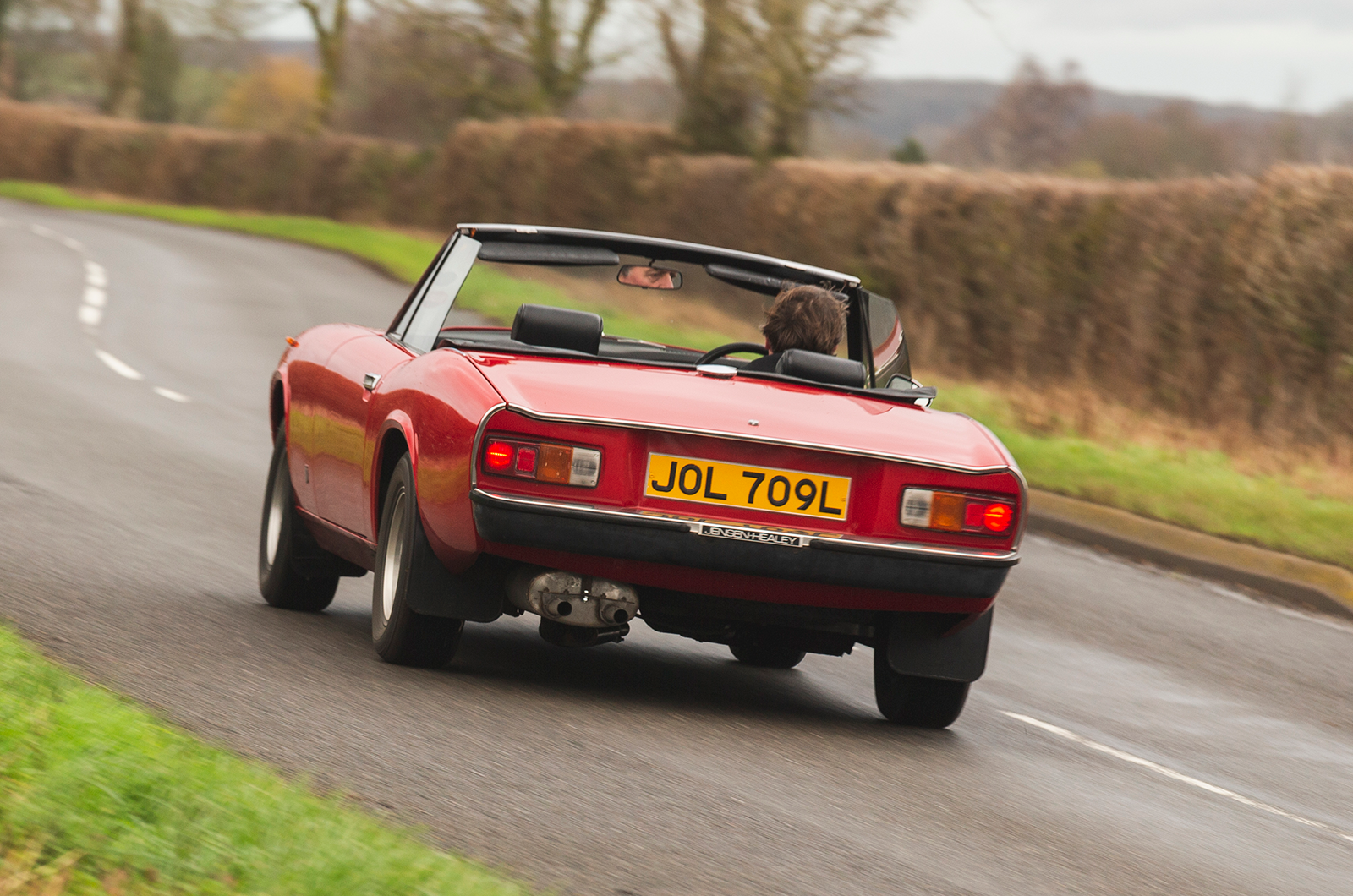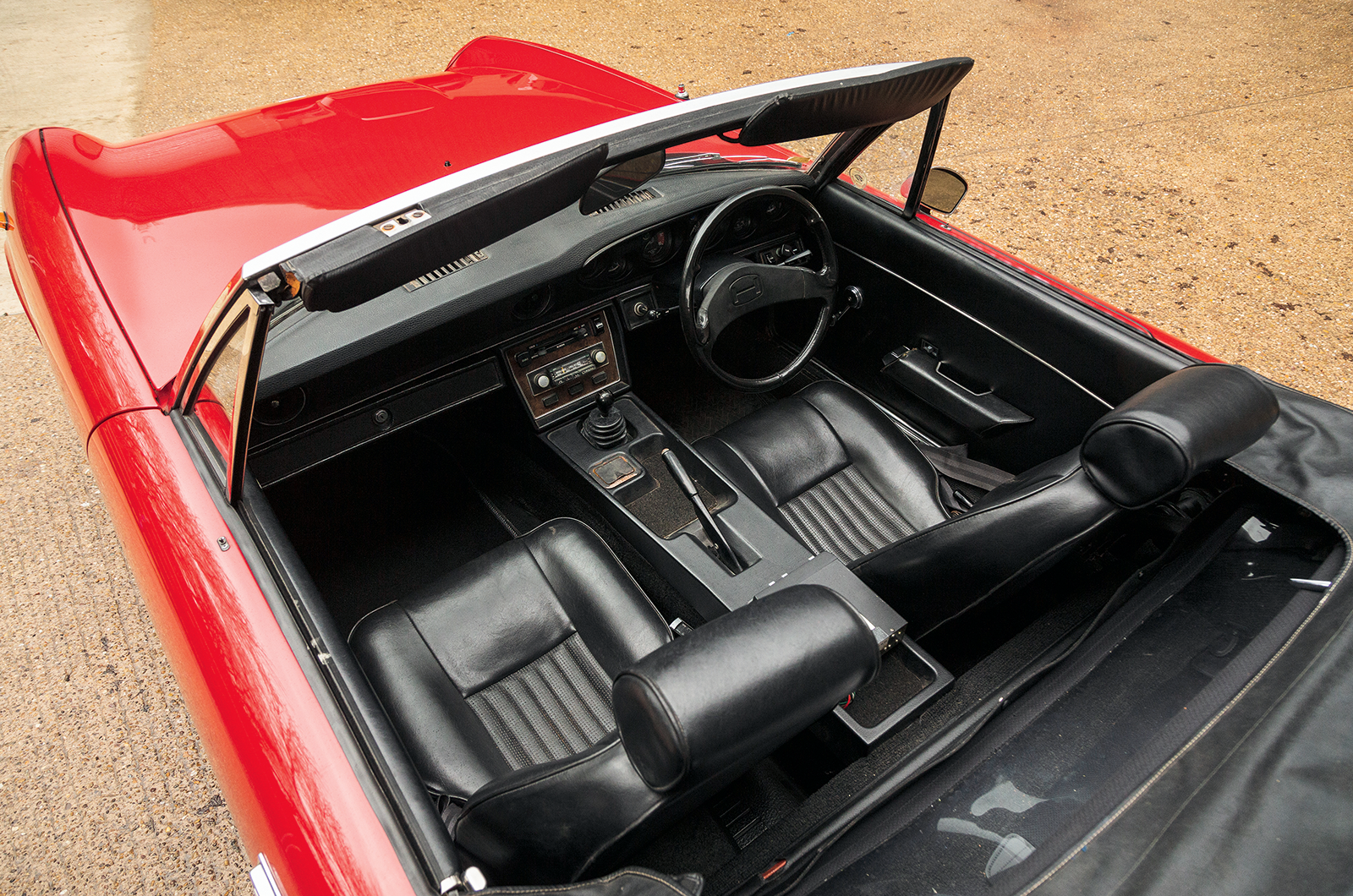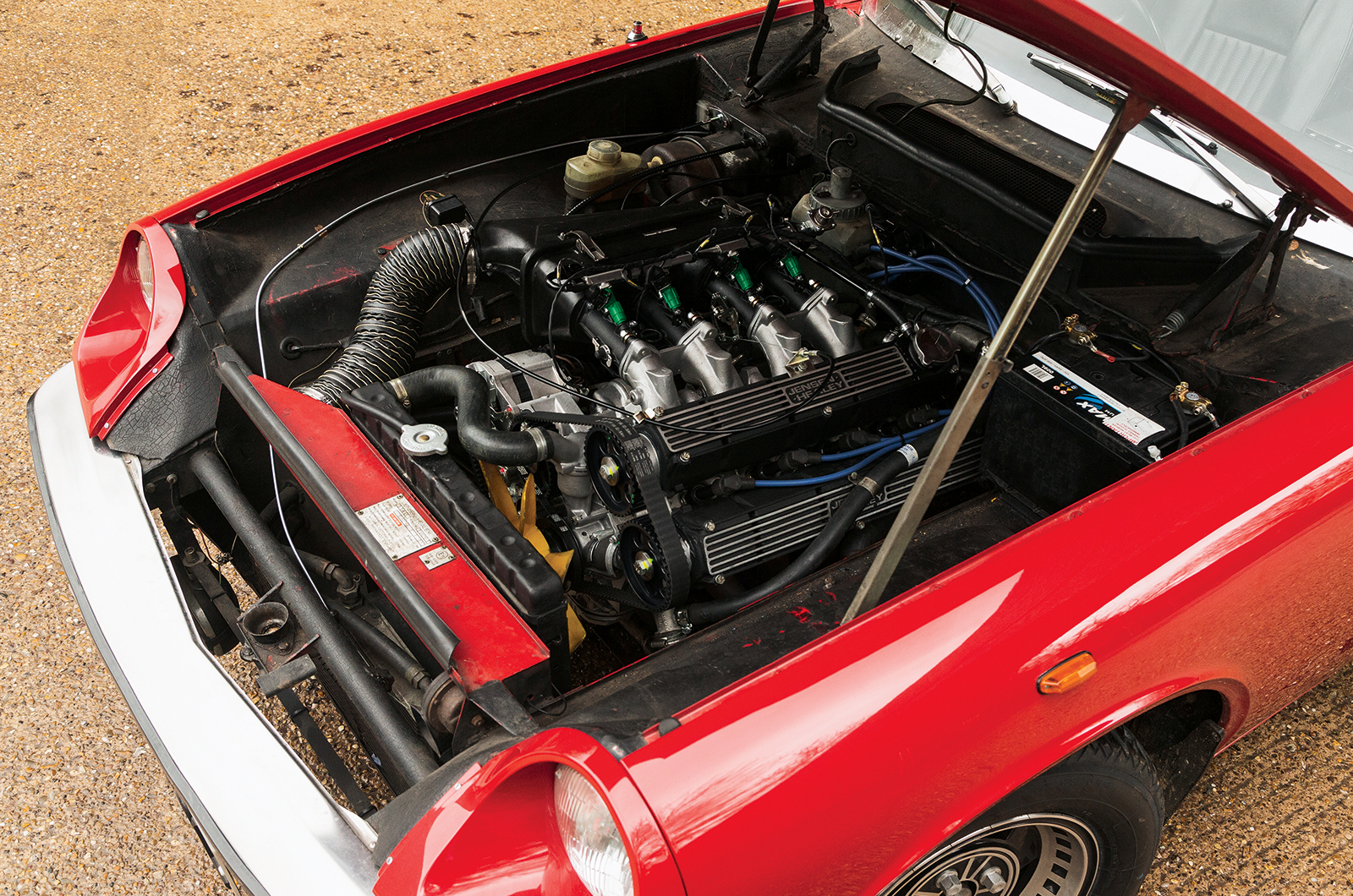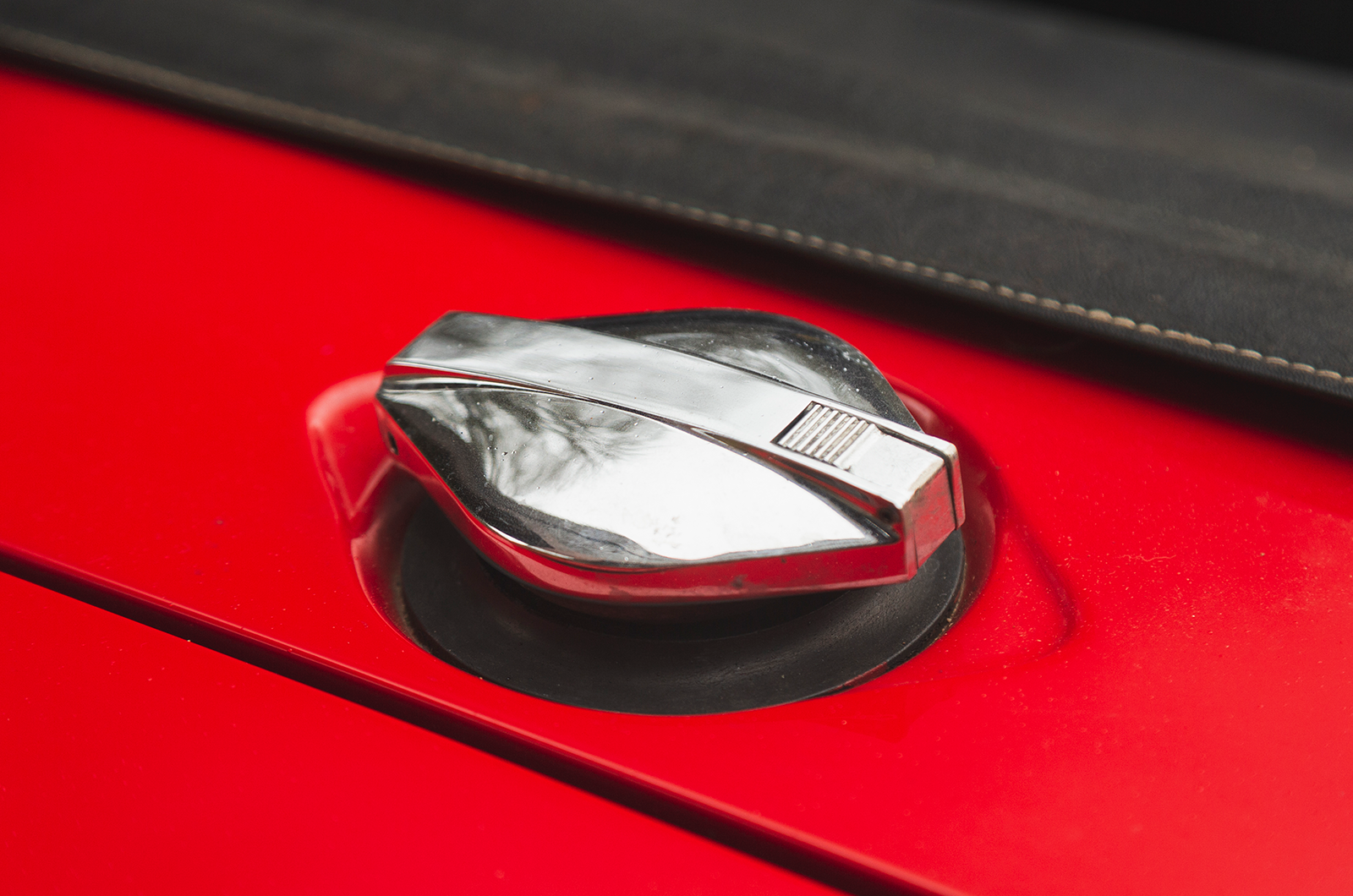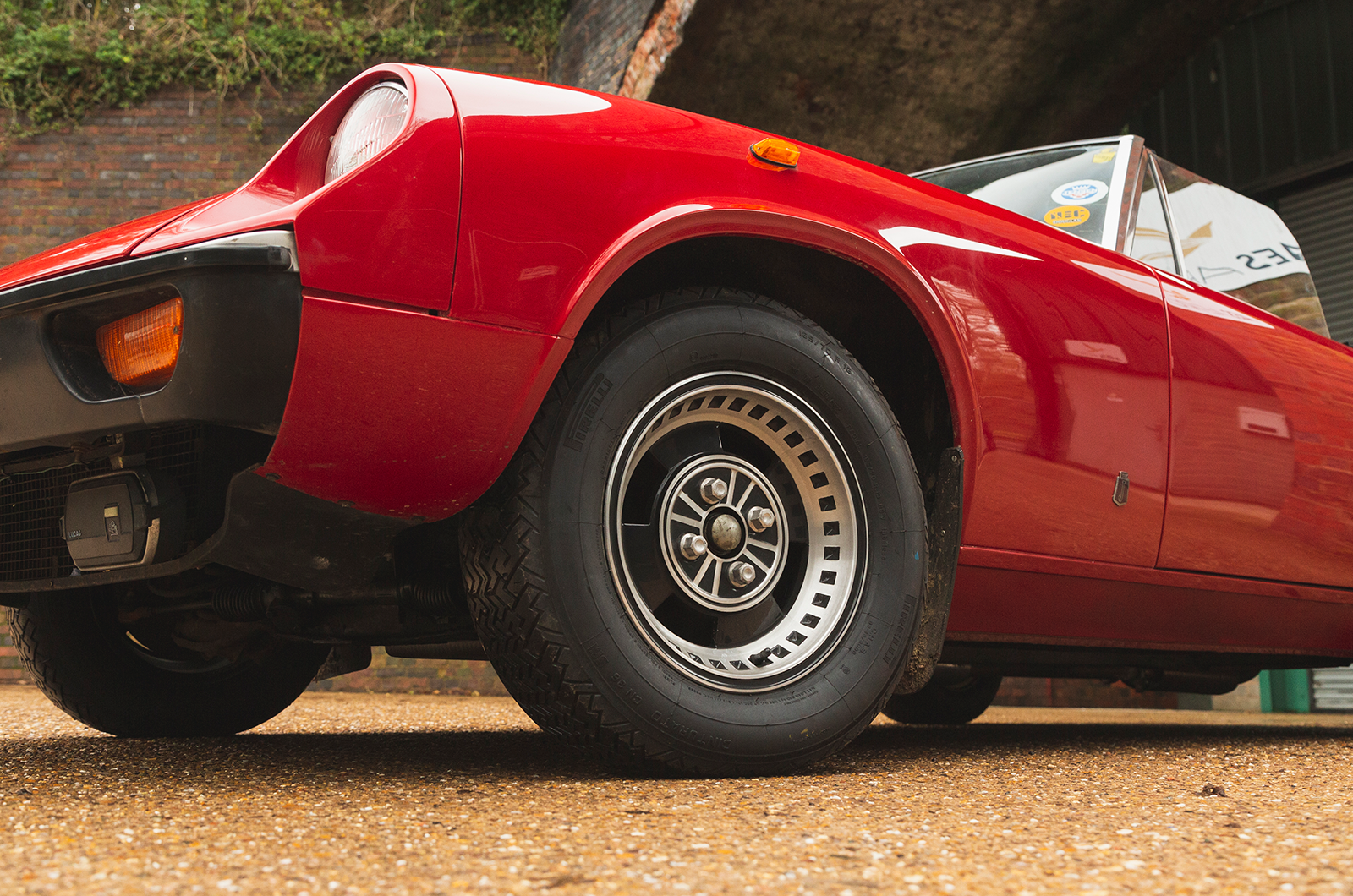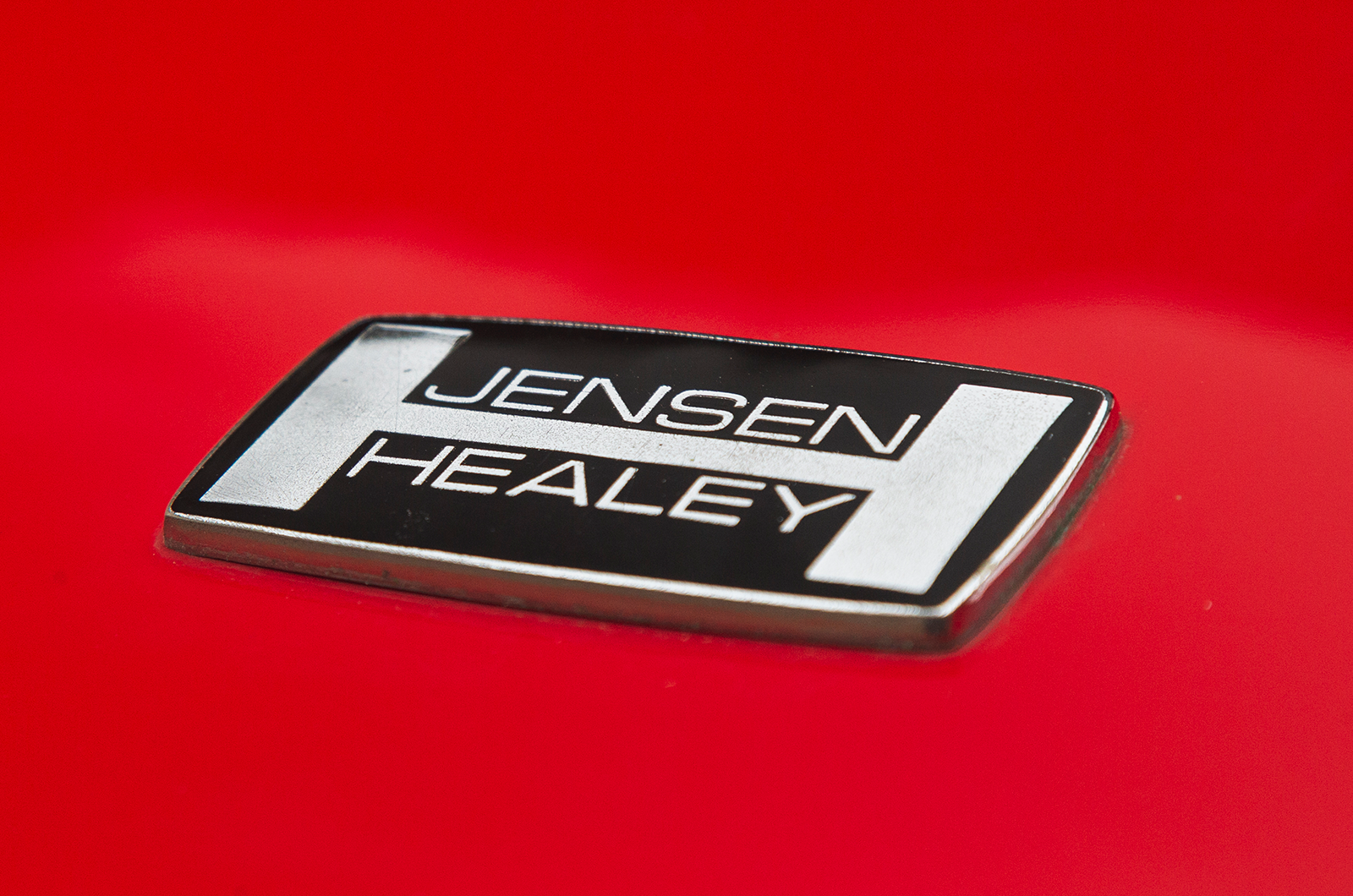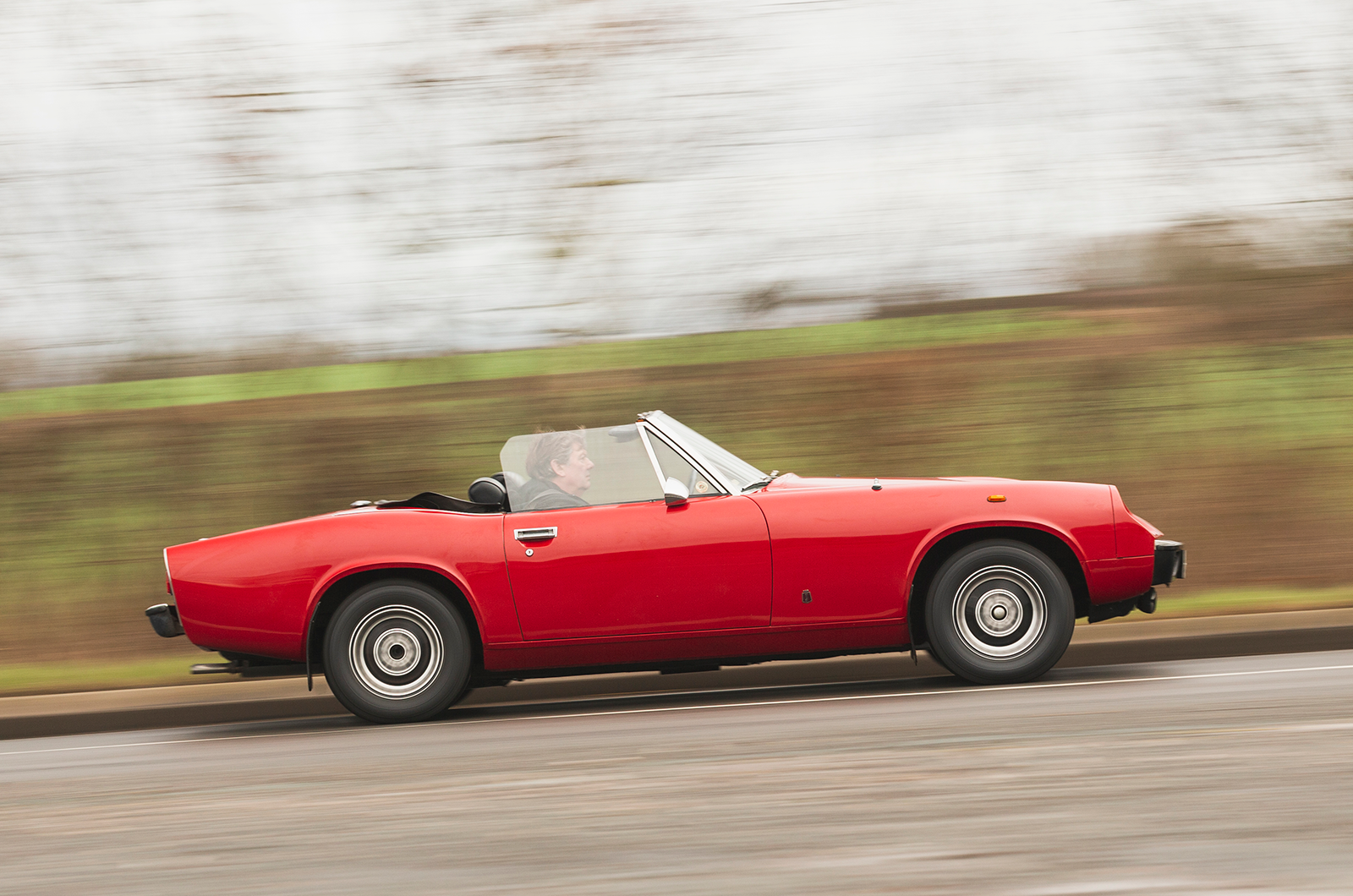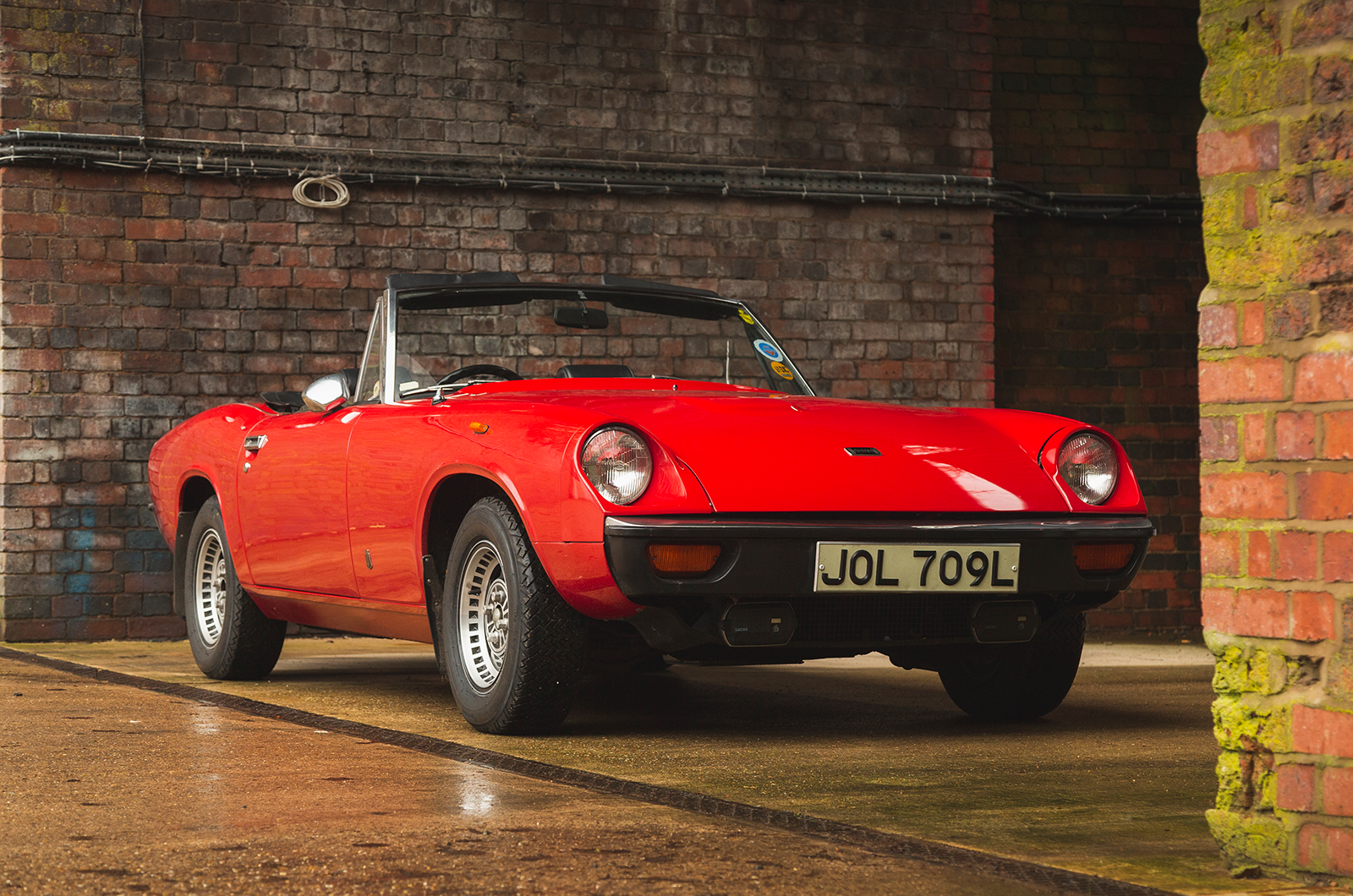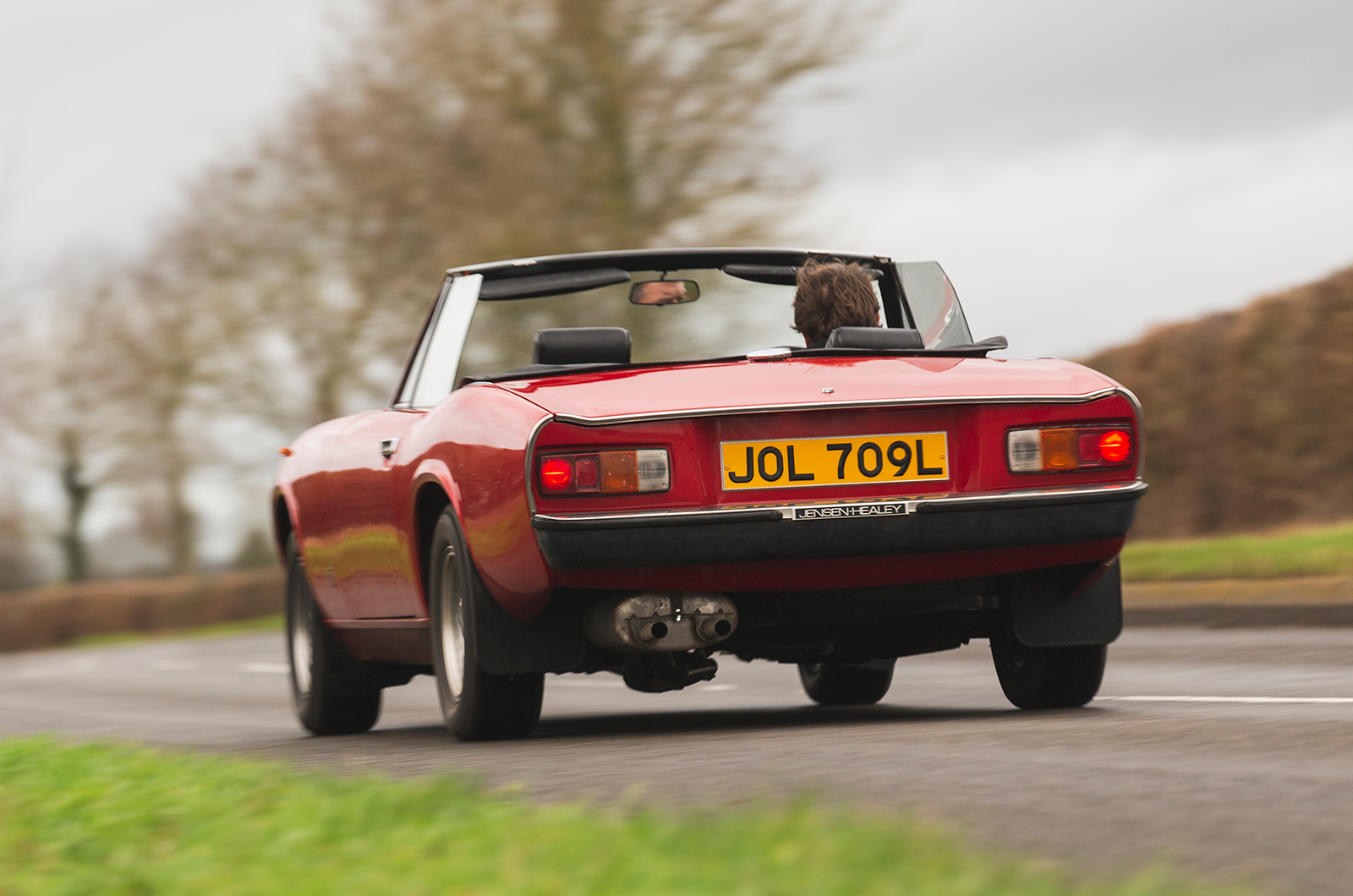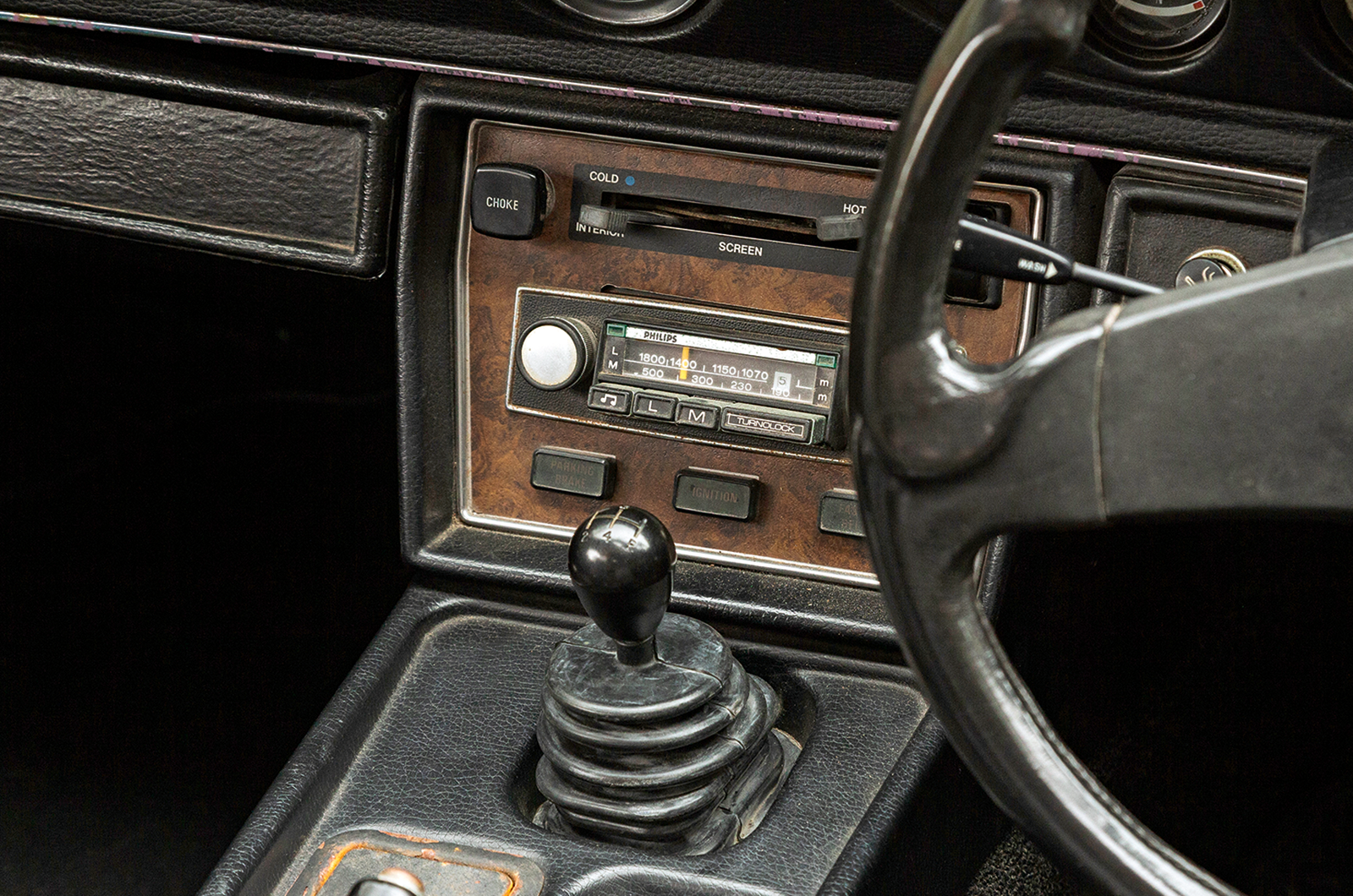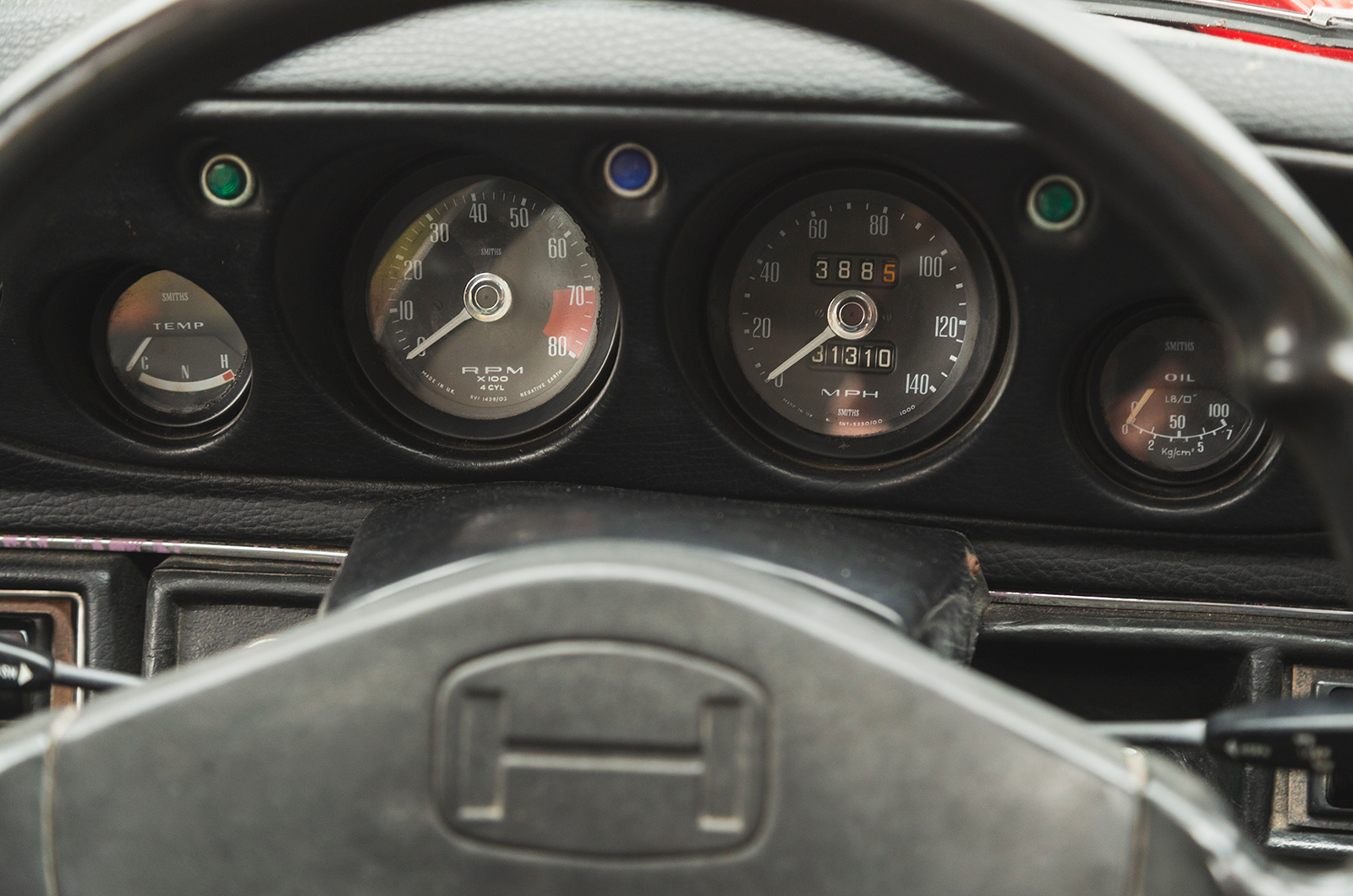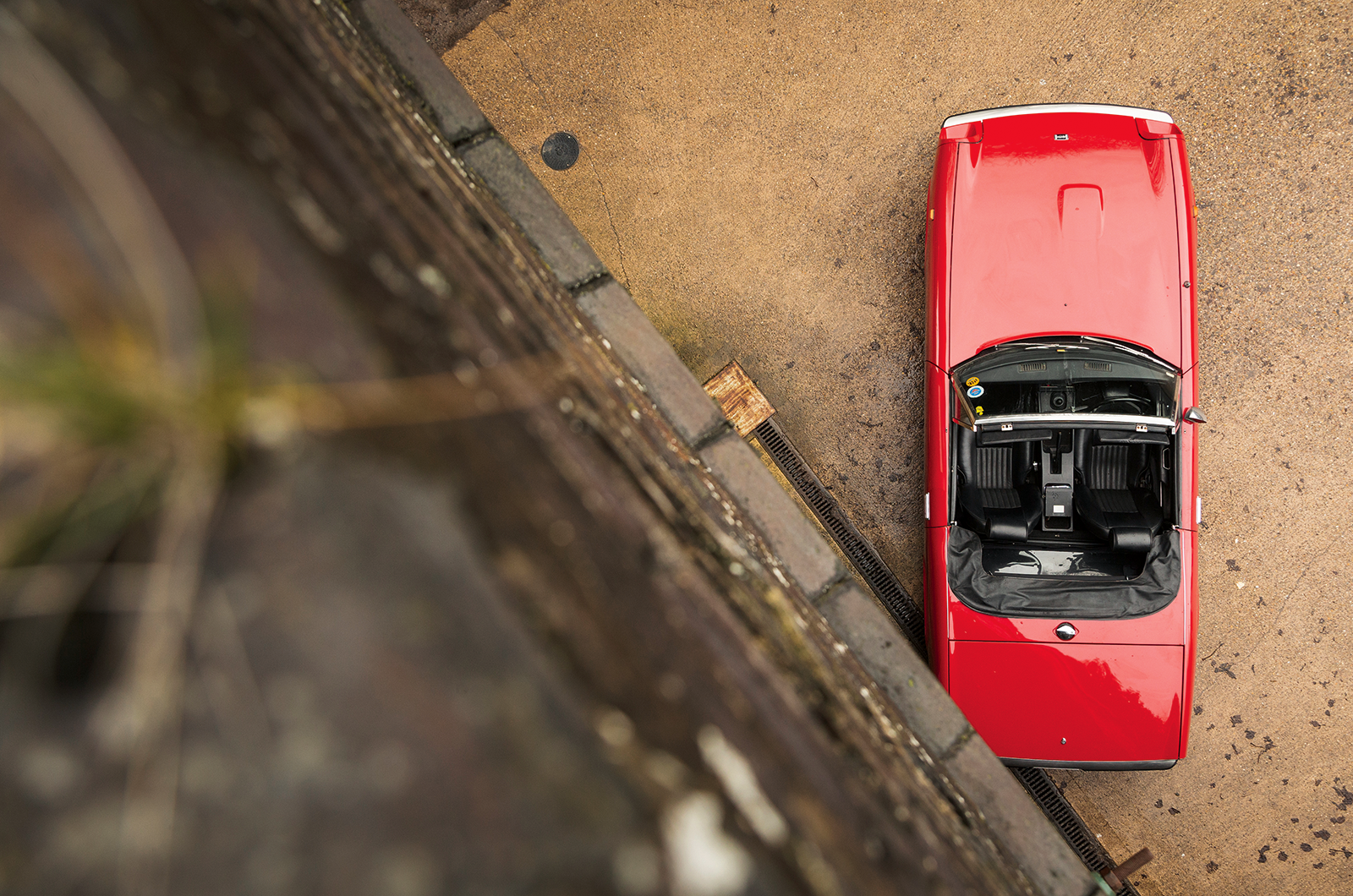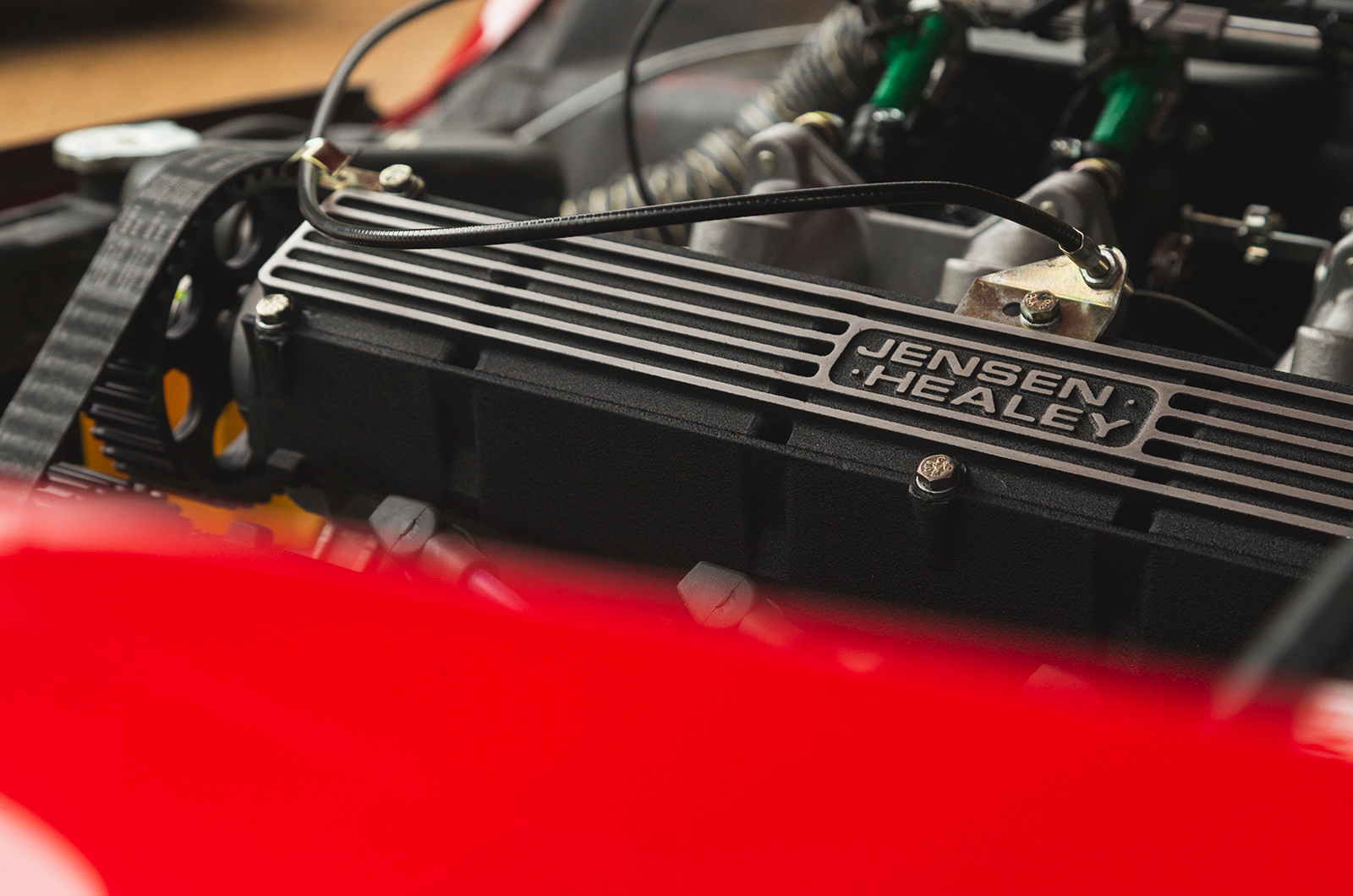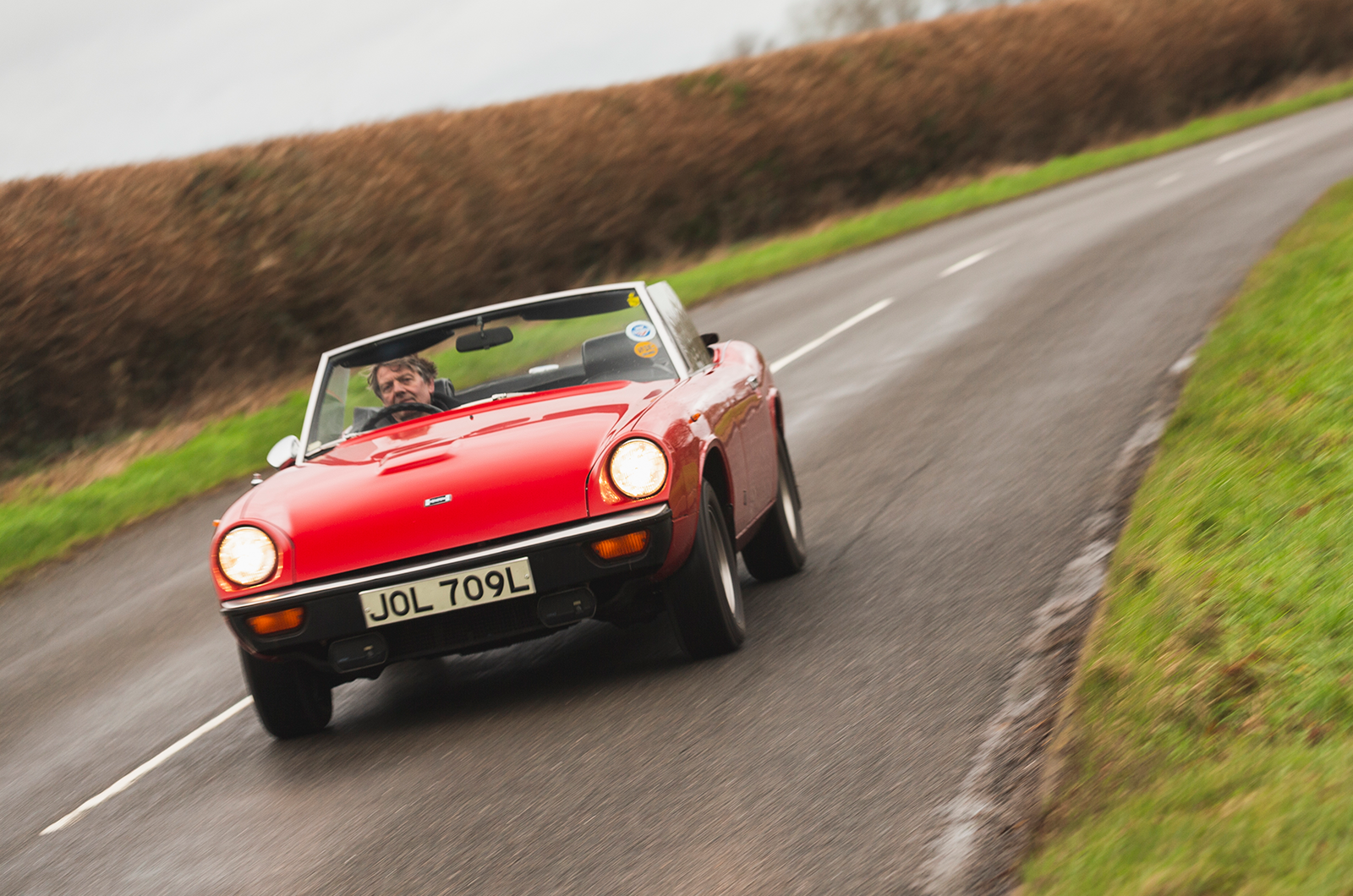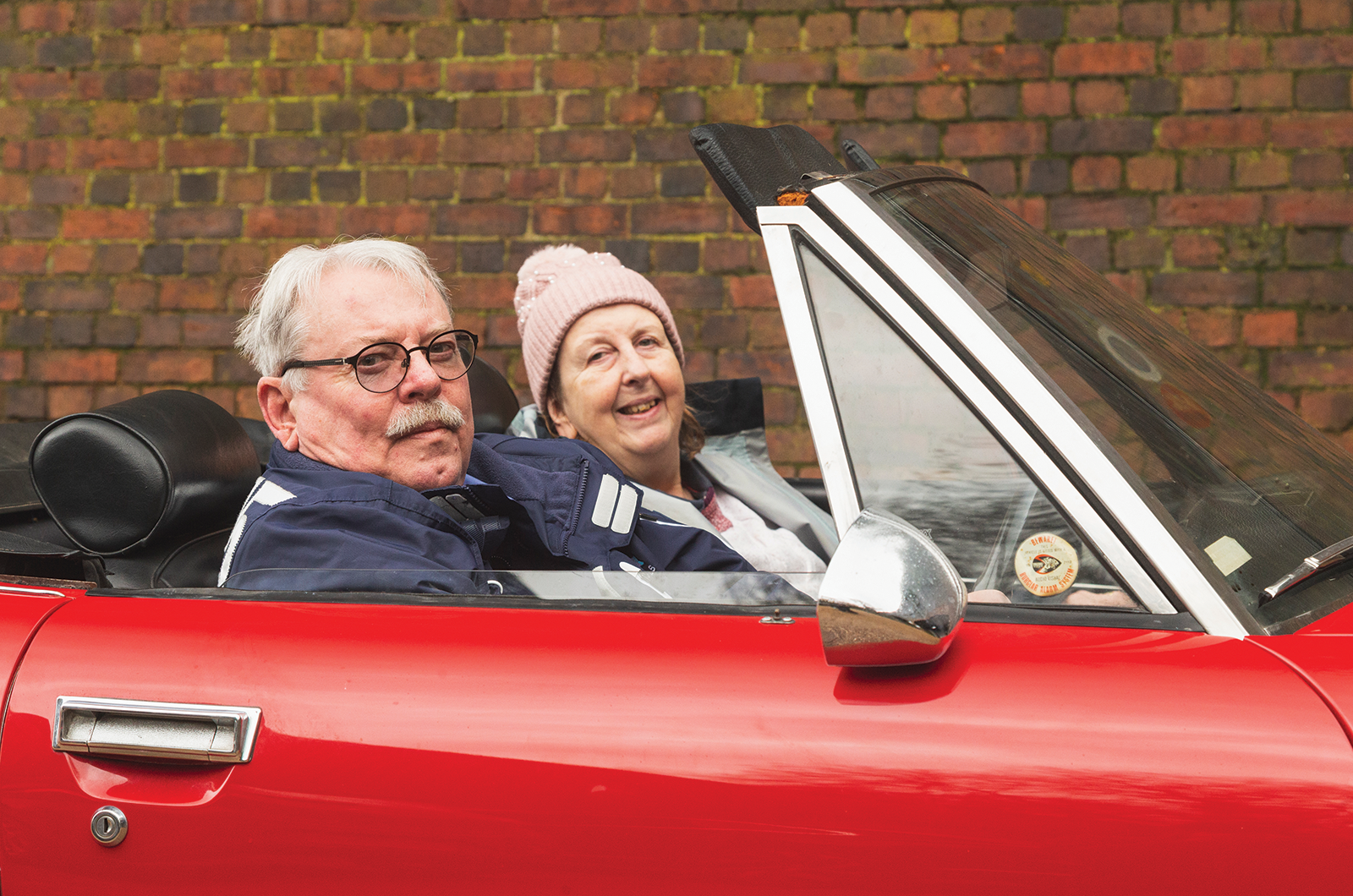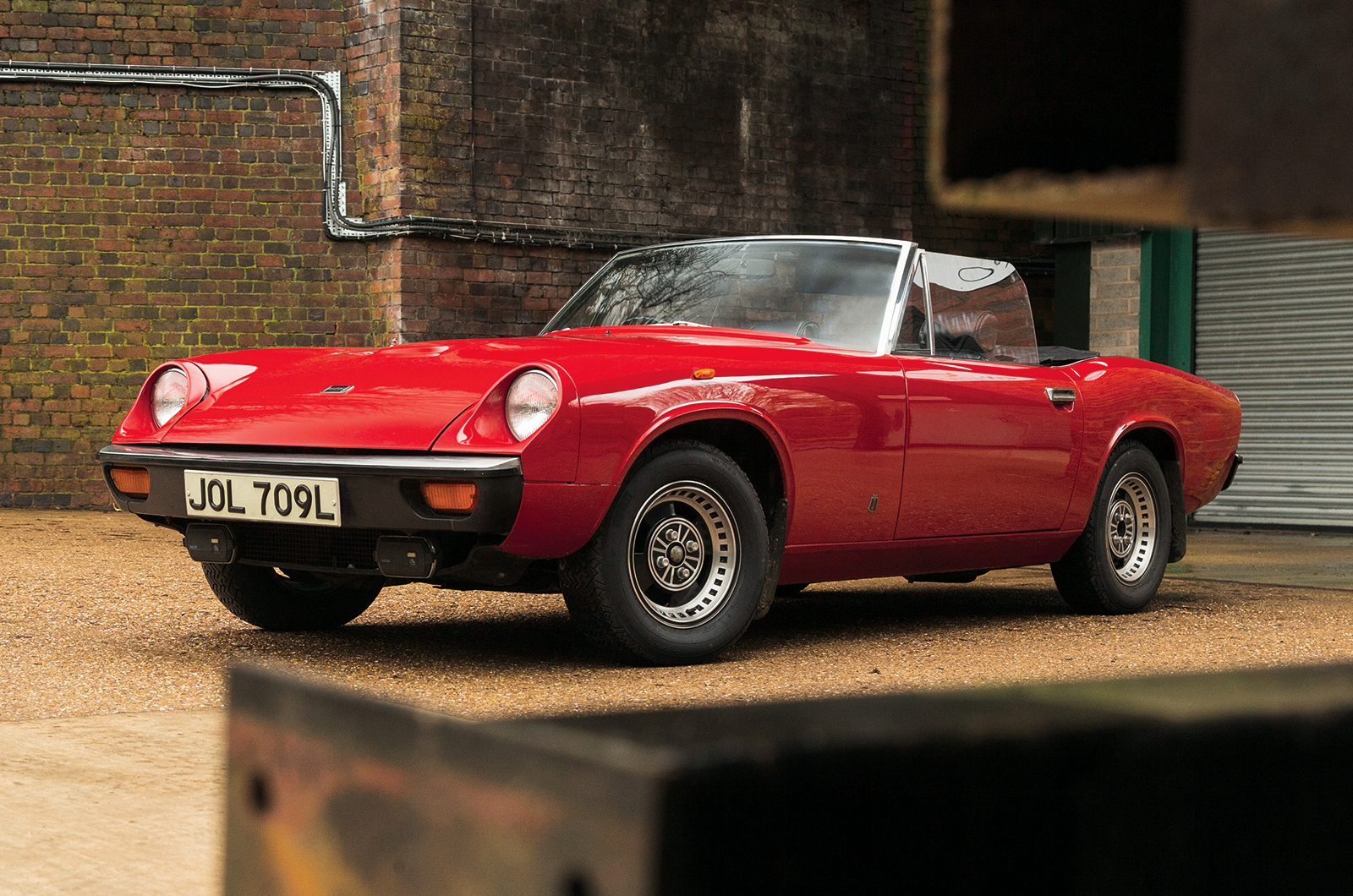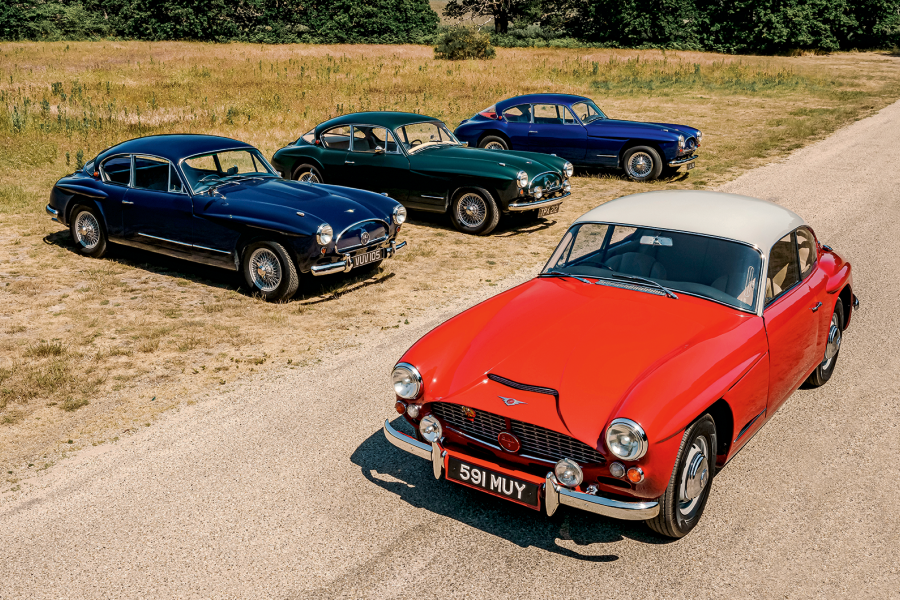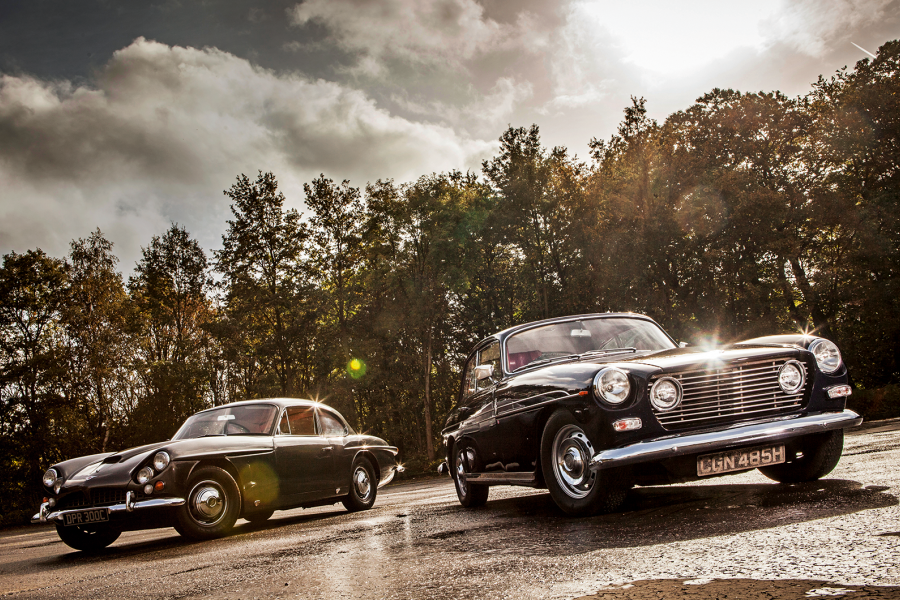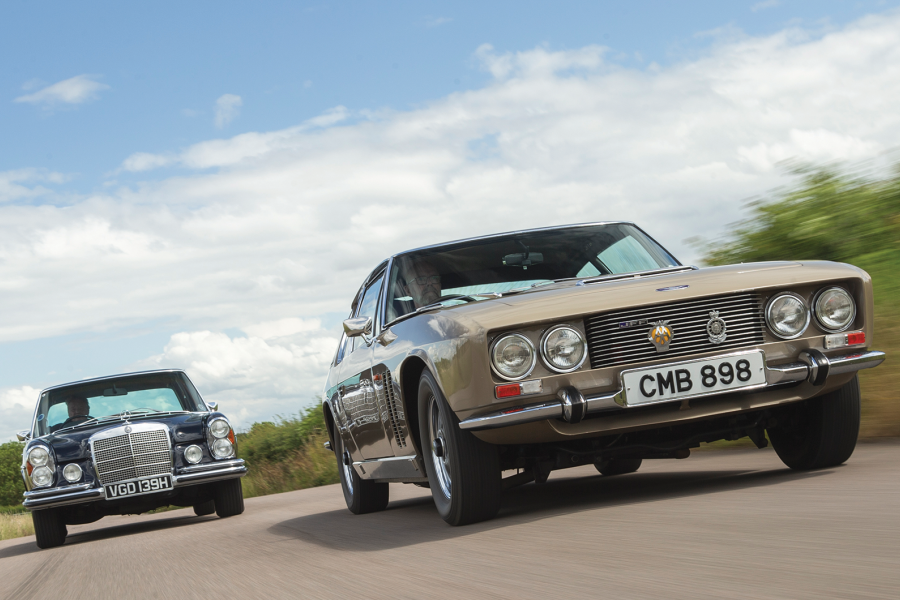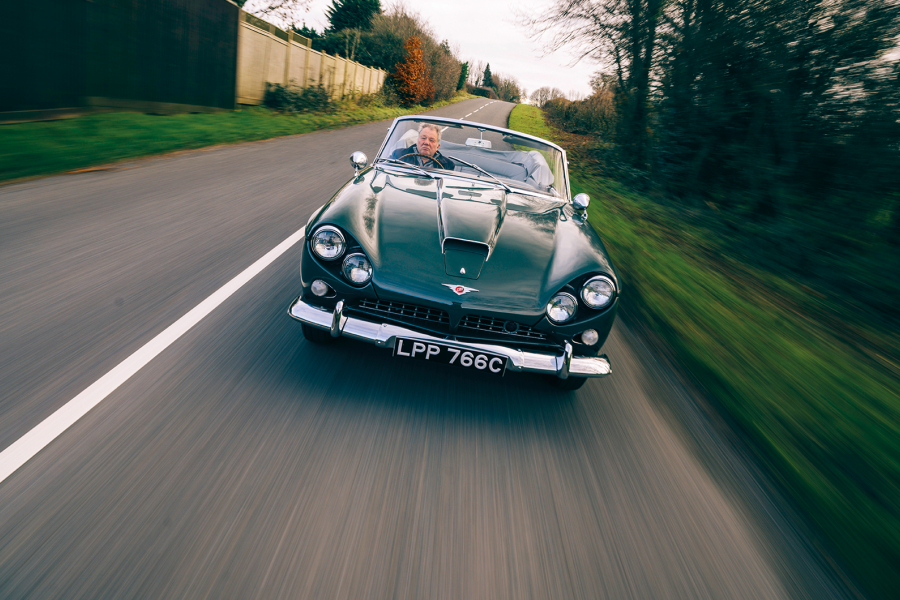The best view is from the rear, where the roomy boot flows into a neatly chopped-off rump incorporating ubiquitous Hillman Hunter tail-lights.
‘Under the bonnet, the factory Dell’Orto 40s and their restrictive airbox have been replaced by throttle bodies in a roomy, well-laid-out engine bay’
The gloomy, synthetically trimmed but highly original interior is not handsome or inviting but, like the rest of the car, it seems to have been specifically created to address the post-vintage shortcomings of the Healey 3000.
Roomy and adequately ventilated, it has well-thought-out controls and low-slung seats that hold you in all the right places.
The dashboard, fully stocked with gauges to measure volts, oil pressure and the rest, kept sporty types happy in a world where warning lights were starting to become the norm.
It also has rounded edges, is free from protrusions and even has a seatbelt warning light: all very Ralph Nader-pleasing.
This revived Jensen-Healey is a joy to drive
The fuel injection means starting is instant, and the well-spaced pedals and smooth drivetrain soon put you at ease with the car.
It has quite a long expanse of bonnet that gently bobs up and down on the move.
This tends to emphasise the soft ride, but seems a small price to pay for genuine comfort that was still rare in sports cars in the 1970s.
On paper the steering is low geared, but it is not over-light or sloppy and feels entirely in sympathy with the car’s well-balanced deportment.
Jensen-Healey owners Robert and Karen; this classic car has been part of the family for more than four decades
There is just enough roll to give you a sense of how much cornering power is being generated, and more than enough torque and throttle response to transition smoothly from gentle understeer to predictable oversteer.
The Toyota gearchange is outstandingly slick and accurate, with ratios perfectly matched to the torque delivery of the engine so the acceleration flows smoothly.
The Lotus unit is not as sweet to the ear as an Alfa twin-cam or an Elan’s, but it makes the right sort of deep-breathing noises that suggest efficiency and high specific output.
It feels usefully and decisively stronger than the original in the way it picks up in the low and mid-range, without turning the 2200lb Healey into a terrifying rocketship.
Modifications have given Robert’s beloved Jensen-Healey a new lease of life
More than 50 years on, the Jensen-Healey is still an orphan, having neither the glamour of its Chrysler V8-engined siblings nor the real-ale-drinking, rally-winning machismo of its handsome BMC-engined predecessors.
Well conceived but poorly executed, it was the right car in the wrong situation and lacked – in spades – an indefinable romance factor that would have caused buyers to forgive its shortcomings.
Perhaps it will never capture hearts in the manner of an E-type or an Elan, but Robert doesn’t care.
His 47-year affair with this reinvigorated car – which, like all the best restomods, looks totally standard – shows there are exceptions to prove every rule.
Images: Luc Lacey
Enjoy more of the world’s best classic car content every month when you subscribe to C&SC – get our latest deals here
READ MORE
Triumph TR7 vs Jensen-Healey: let’s think again
Triumph Spitfire vs MGB vs Lotus Elan: a new dawn
Buyer’s guide: Jaguar E-type S1, S1.5 & S2
Martin Buckley
Senior Contributor, Classic & Sports Car
